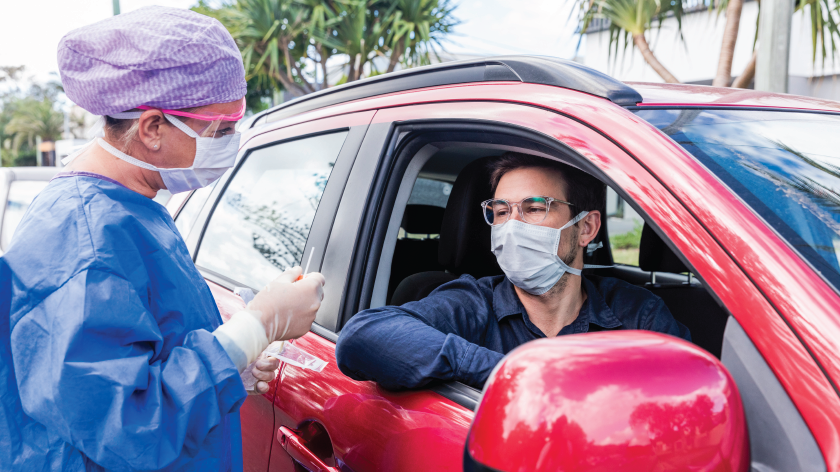The COVID-19 pandemic has brought with it a new normal – and a new vocabulary. From “social distancing” to “respiratory droplets,” we’ve all been exposed to public health terms with which we may not have previously been familiar. Here we break down two types of testing: diagnostic and antibody, and contact tracing. We’ll explain what they are, why they are important, and the unique roles each of these plays in protecting your community against the spread of infection.
Diagnostic Tests
Diagnostic tests are those which help to determine which patients have an active COVID-19 infection. This test requires a sample of mucus taken from a person’s nose or throat, using a large Q-tip-like swab. This sample is then put into a PCR (polymerase chain reaction) machine, which amplifies any trace of the virus in the genetic material so it’s detectable if a person is in fact infected. In general, diagnostic tests are fairly reliable. However, these tests can result in false negative results, meaning that the test might come back negative when the person is in fact a positive case. This can happen when there is not enough of the virus present in the sample and the swab fails to pick it up, or if an individual is tested too early in the infection and the virus hasn’t begun replicating in the throat and nose. Diagnostic tests are generally sent to a lab for analysis by the PCR machine, so results can take several days. There are also rapid tests that can provide results in less than 15 minutes, however, the accuracy of the rapid tests has been called into question.
Antibody Tests
Antibody tests, on the other hand, identify people who have previously been infected with the COVID-19 virus. Instead of detecting the actual virus, this test looks for proteins in the blood called antibodies that are produced when the body fights an infection. A positive result to an antibody test means the patient was infected at some point with COVID-19 and the body had an immune response to the virus. Antibody testing is important on a population level, as it can tell us how prevalent the virus really is, how many people contracted it without experiencing symptoms, and whether survivors have potential immunity to the virus. There are more than 100 antibody tests currently on the market and there are concerns about the accuracy of these tests. Because it can take days to weeks after infection with COVID-19 for a patient to develop antibodies, the test might not detect antibodies even in an infected patient, resulting in a false negative. These tests are more informative on a population level rather than an individual level – even if you have a positive antibody test result, we still don’t know whether you are able to be infected again, whereas on the population level, they can provide helpful information about the rates of infection in a community.
Contact Tracing
Contact tracing is another key component of the COVID-19 response. Contact tracing is the process of identifying positive cases and working with them to recall everyone with whom they had close contact during the time they may have been infectious. Then, those people are informed that they may have come into contact with a positive case and are given information about monitoring themselves for illness through temperature checking and watching for cough or shortness of breath. They are also given information on how to protect the people around them, as it is possible that they could be asymptomatic but still spread the infection. These individuals are encouraged to stay home and maintain social distance from others for at least two weeks since their exposure, in case they become sick. By quickly identifying infected individuals and those who may have been exposed, contact tracing is a critical tool in helping prevent the spread of infection within a community.
Lianne Jacobs, Product Analyst, has a master’s degree in public health from Yale University. She is the only indoor cycling instructor who can’t ride a bike. She enjoys traveling the world, laughing at her own jokes, and tricking her husband into eating baked goods made with hidden vegetables.







